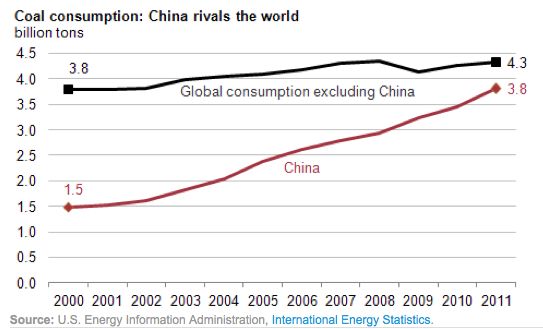There is a smattering of good news when it comes to China’s insatiable appetite for coal.
Beijing will eliminate nearly all of its coal-fired boilers by 2015, with three districts already complying, according to China Daily. The capital city will bring its coal consumption down to about 21 million tons of coal this year, down from about 26 million tons in 2010.
Five million less tons of coal may seem like progress, but China burns 3.8 billion tons of coal a year -- nearly rivaling the rest of the world combined. The world's most populous nation is also aiming to have 15 percent of its power come from non-fossil sources by 2020.

The reduction will help make a dent in the toxic smog that engulfs the city, but it will hardly be enough. Much of the city’s pollution comes from neighboring areas with heavy industries.
China Daily reported that the coal-fired burners will be replaced with cleaner energy, but "clean" is a relative term. Most new boilers will be fueled by natural gas or oil.
The start by cities like Beijing, however, could be critical, according to a recent blog post on Huffington Post by Barbara Finamore, senior attorney and Asia director for Natural Resources Defense Council.
Finamore outlined five other ways China is working to reduce its coal consumption, although many are in pilot phase or are non-binding.
- Establishing pilot carbon emissions trading programs in five cities.
- Capping total energy consumption at 4 billion tons of coal equivalent by 2015.
- Considering a tax on resources, including coal, in order to account for the environmental costs of coal and shift investment toward clean energy.
- Finalizing new emissions control limits for six heavily polluting industries.
- Planning regional coal consumption cap pilots in key regions.
Another necessary strategy is to increase energy efficiency across the country, from heavy industry to homes. “China has made significant progress in energy efficiency but still requires about twice as much energy as the world’s average to produce one unit of GDP,” Finamore wrote in the blog post.
Even with huge increases in energy efficiency, from heavy industry to middle-class homes, it still might not be enough to derail the country’s plans for more than 360 new coal plants.



